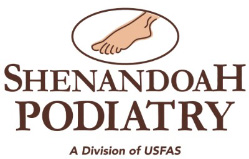 Welcome to Shenandoah Podiatry. If you're like most of the patients we see at our Roanoke, Virginia practice, you want your feet to look and feel their best. Unfortunately, even relatively minor podiatric problems like corns and calluses can make this seemingly simple goal difficult to achieve. Fortunately, you don't have to let corns stand between you and the centerfold-worthy feet of your dreams. Shenandoah Podiatry's exceptional podiatrists can relieve corn pain and discomfort and improve the appearance of your feet. Here's what you need to know.
Welcome to Shenandoah Podiatry. If you're like most of the patients we see at our Roanoke, Virginia practice, you want your feet to look and feel their best. Unfortunately, even relatively minor podiatric problems like corns and calluses can make this seemingly simple goal difficult to achieve. Fortunately, you don't have to let corns stand between you and the centerfold-worthy feet of your dreams. Shenandoah Podiatry's exceptional podiatrists can relieve corn pain and discomfort and improve the appearance of your feet. Here's what you need to know.
Understanding Corns, Calluses, and Their Causes
Corns and calluses are common podiatric blemishes that form on the feet in response to excess friction, pressure, or irritation. Though they have the same primary causes, respond to the same treatment and prevention methods, and are often confused for each other, corns and calluses are separate and distinct podiatric skin issues. Here's how they differ.
What Are Calluses?
Calluses are thickened areas of skin that typically form on the weight-bearing parts of the foot, such as the soles, balls of the feet, or heels. Though they can be unsightly, unlike corns, calluses usually aren't painful.
What Are Corns?
Corns are raised areas of thickened skin with a hard center. Smaller than calluses, corns have a hard center that's often surrounded by painful, inflamed skin. Corns usually form on the tops and sides of the toes, at points where the skin might rub against the inside of a shoe.
Home Care for Corns
Though corns can be painful and unsightly, the good news is that they respond well to a variety of conservative treatments, many of which can be completed at home. Common lifestyle and home remedies for corns include:
- Soaking your feet in warm, soapy water to soften the thickened skin
- Gently rubbing the affected area with an emery board, nail file, punished stone, or washcloth to help remove toughened skin
- Using over-the-counter corn pads to protect the parts of your feet that are prone to developing corns or calluses
- Applying a high-quality moisturizer to your feet regularly—this is particularly important after soaking your feet or getting out of the shower or bath
- Wearing comfortable, well-fitting shoes and socks
When to See a Podiatrist
When corns—or related pain and discomfort—interfere with daily living, persist, or recur despite home remedies and lifestyle changes, it's time to see a podiatrist for professional evaluation and treatment. Medical treatment options may include:
- Having excess skin removed from a large corn using a scalpel (this should only be done by an adept podiatrist)
- Wearing prescription custom shoe inserts or orthotics; this can be particularly helpful when a structural deformity like a bunion or hammertoes is a contributing factor in corn development
- Surgical bunion or hammertoe correction to help relieve pressure and friction on parts of the foot that are prone to corns; of course, we always save surgery as the last option
Wondering which treatment is right for you? Talk to our podiatrists and ask about our advanced interventions.
Potential Complications
In most cases, corns heal without incident. However, for diabetics and others with nerve or circulatory concerns, a simple corn can easily become serious. For example, if you suffer from diabetic neuropathy in your feet, you might not be able to feel a corn until it's become infected, and if you also struggle with poor circulation, the infection and sore may be slow to heal. Don't risk it. If you have diabetes or other serious health issues, see a podiatrist at the first sign of irritation, discomfort, inflammation, or pain.
Schedule an Appointment With Our Specialists
Tired of letting corn pain and discomfort dictate your day? Let us help your feet look and feel their best. Complete our online contact form or call Shenandoah Podiatry at 540-904-1458 to schedule an appointment with Dr. Jennifer Keller, Dr. Natalie Allen, or Dr. Marissa Icardi.
|
Related Links: |
